Abstract
In a strictly controlled clinical situation, (postoperative sickness) where variables were reduced to a minimum, it was possible to demonstrate an effective prophylactic antiemetic action of P6 (Neiguan) acupuncture. Manual and electrical invasive (needling) stimulation of this point were equally effective. Non-invasive stimulation (transcutaneous electrical or pressure) was effective in the early postoperative period, but the effect did not last as long as for invasive acupuncture--although it was as good as standard antiemetics. Stimulation of a "dummy" acupuncture point was ineffective as was administration of the acupuncture after the emetic stimulus (opioid). This effect can be blocked by local anaesthesia at the P6 point. Acupressure (P6) is moderately effective in reducing morning sickness, but here there is more of a psychological element as pressure on a "dummy" point gives some alleviation of symptoms. Given in conjunction with standard antiemetics, P6 acupuncture is a useful adjuvant in reducing sickness after cancer chemotherapy. This effect can be prolonged for 24 hours by acupressure.
Full text
PDF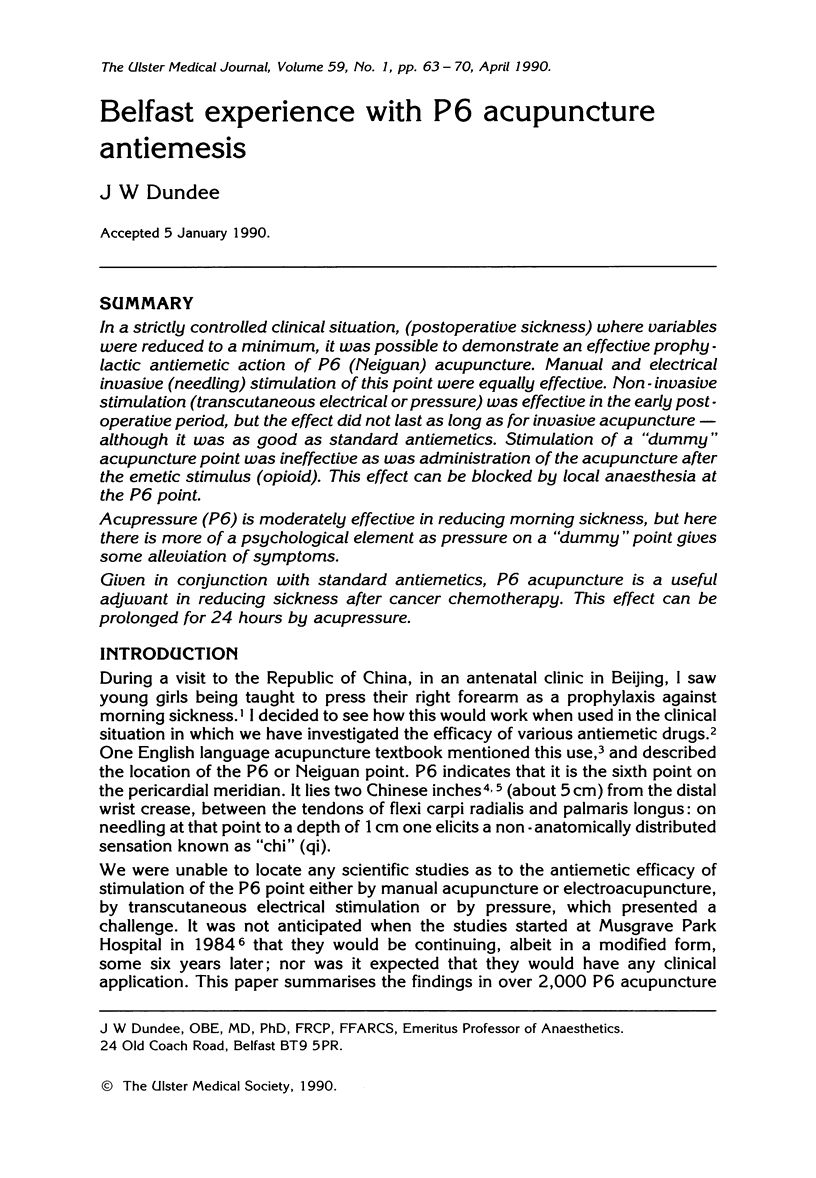
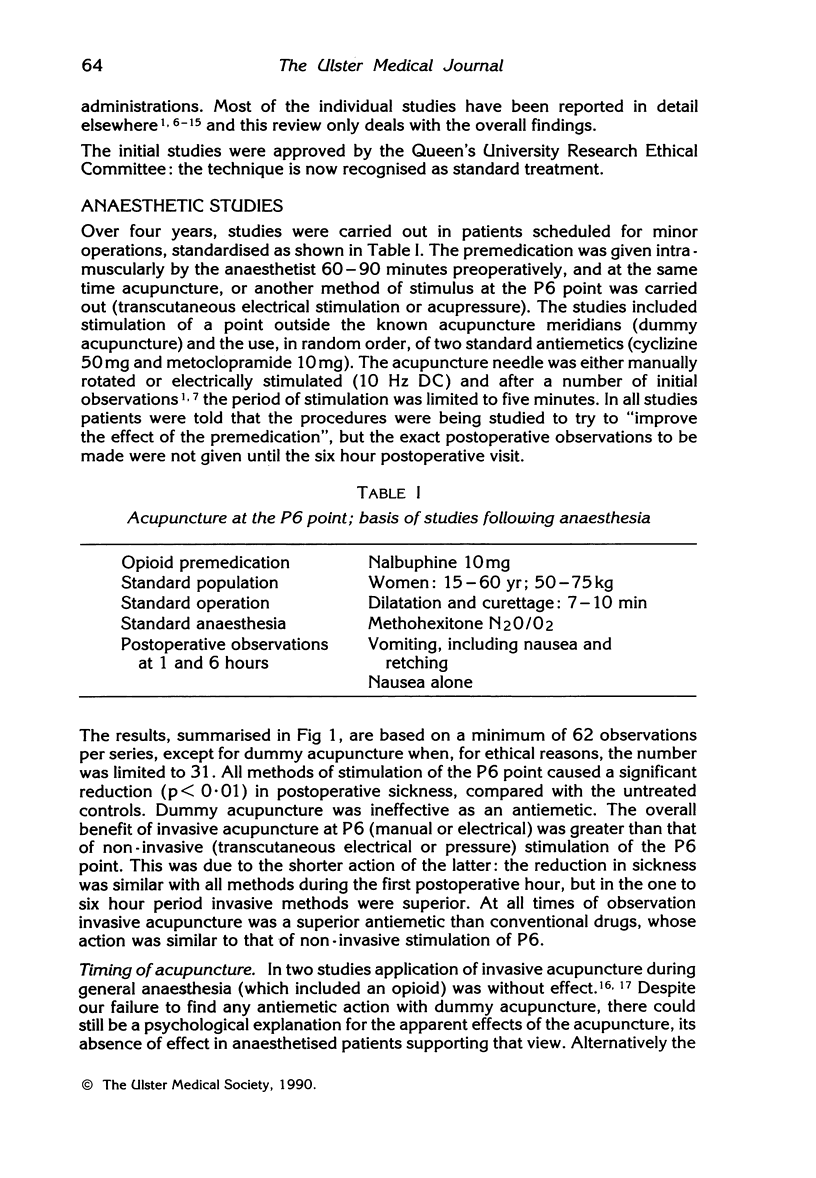
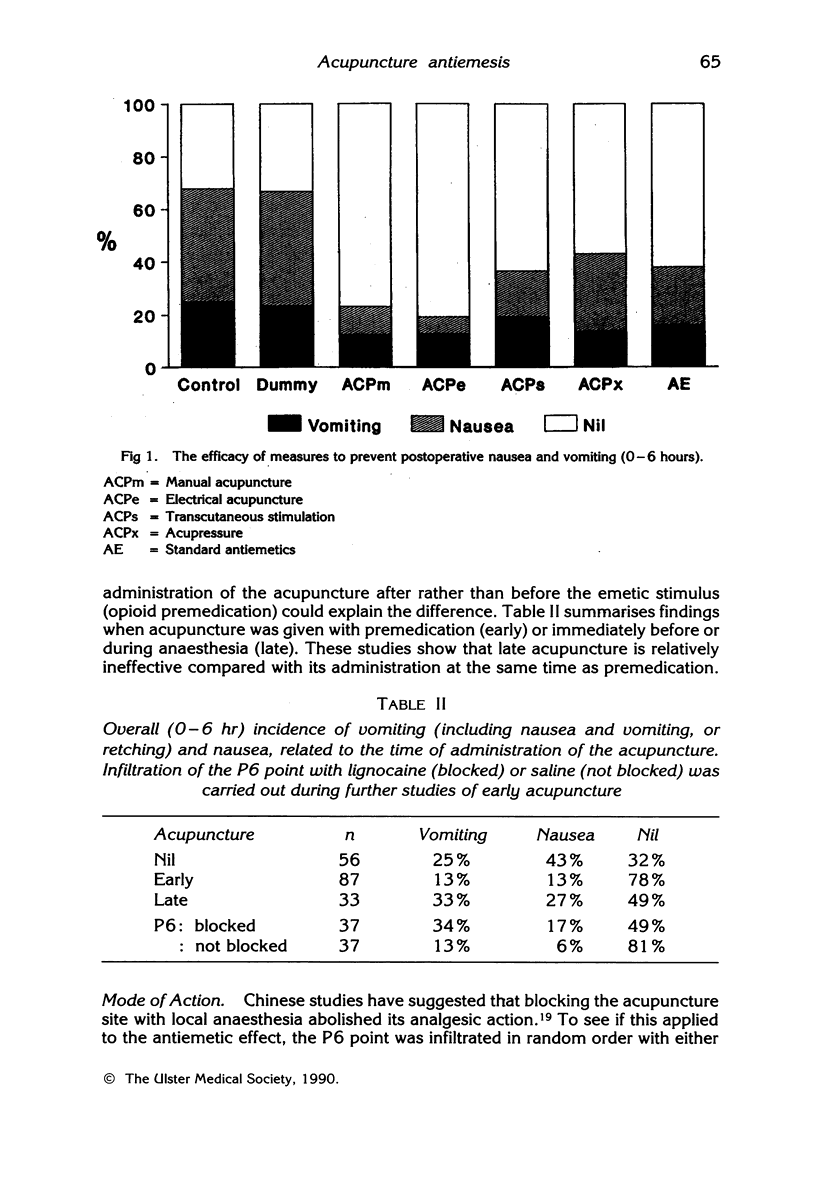
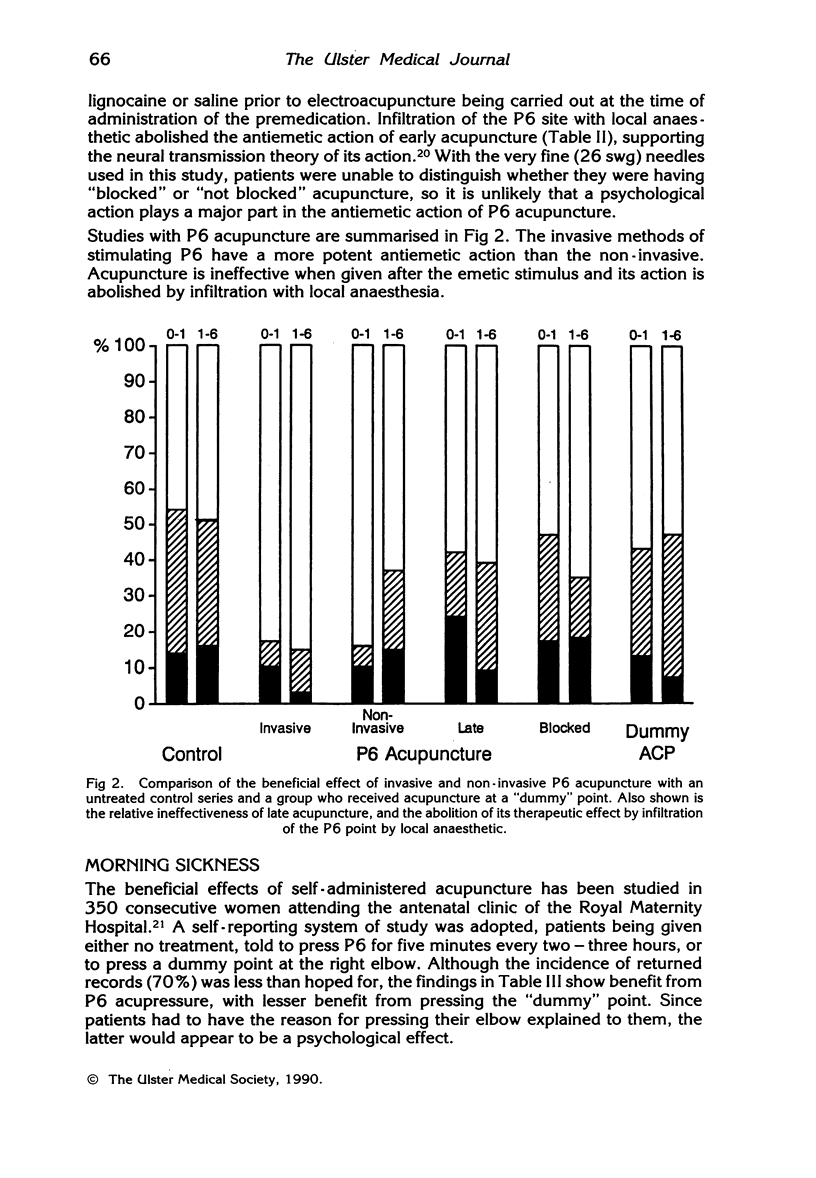
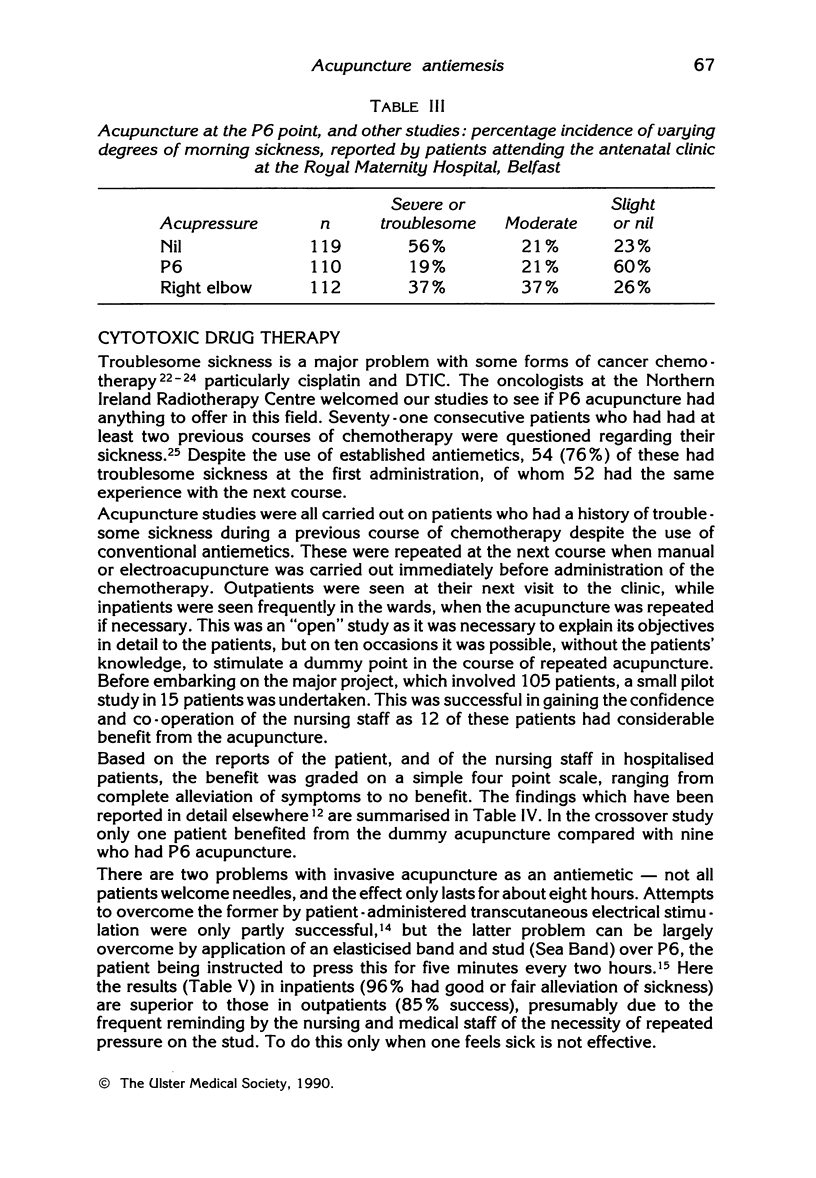
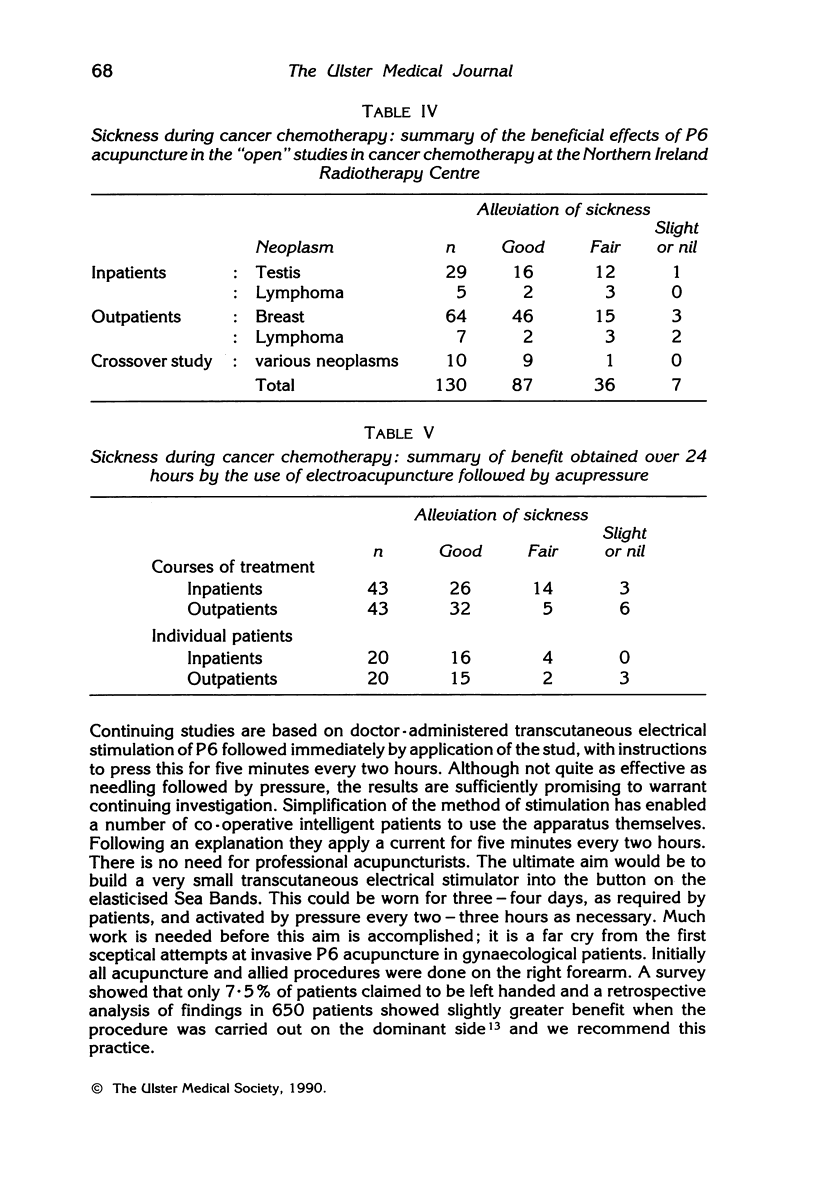
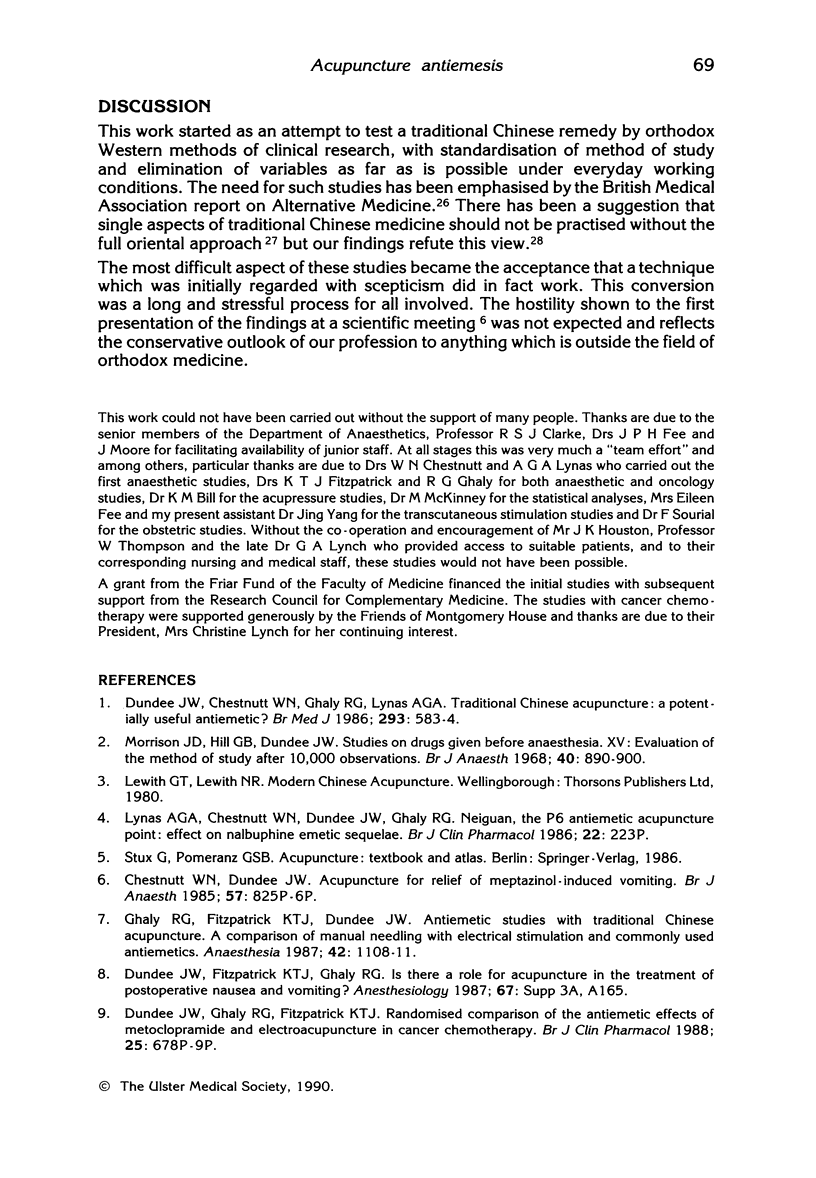
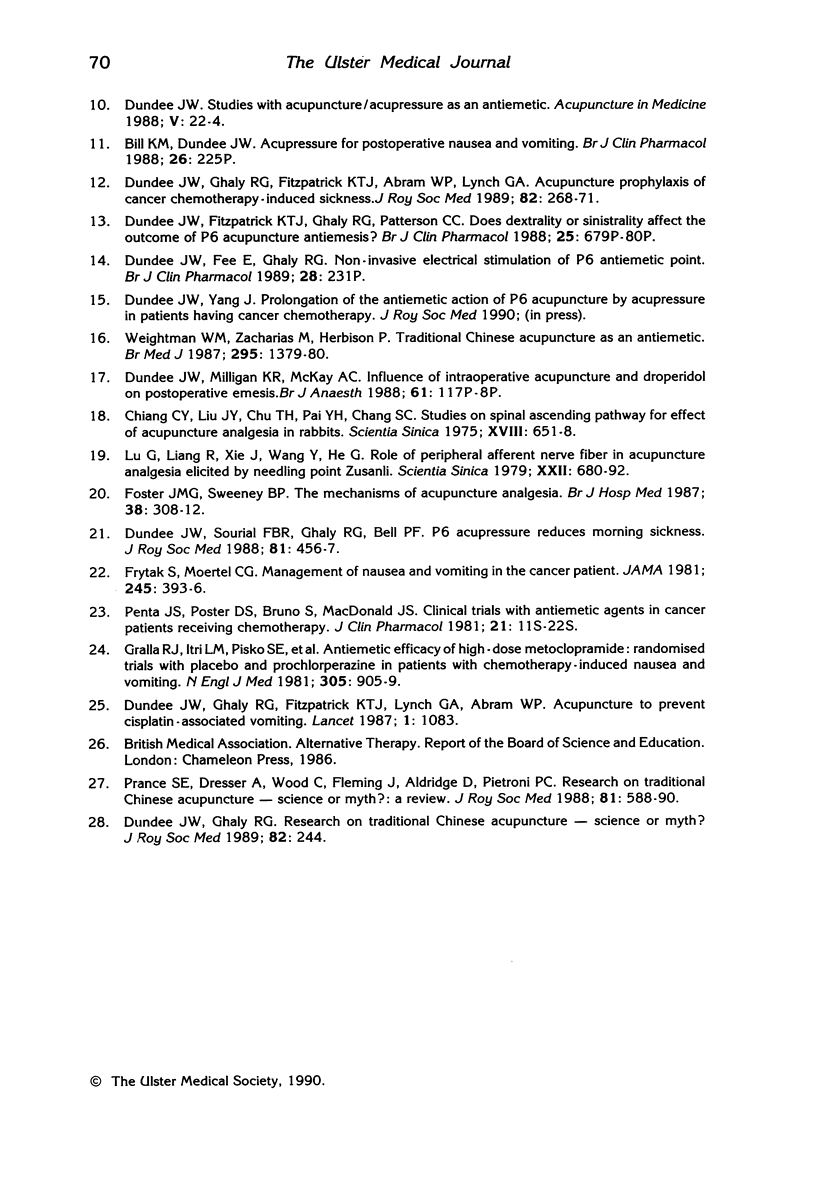
Selected References
These references are in PubMed. This may not be the complete list of references from this article.
- Chen-yü C., Jen-yi L., Teh-hsing C., Yao-hui P., Shu-chieh C. Studies on spinal ascending pathway for effect of acupuncture analgesia in rabbits. Sci Sin. 1975 Sep-Oct;18(5):651–658. [PubMed] [Google Scholar]
- Dundee J. W., Chestnutt W. N., Ghaly R. G., Lynas A. G. Traditional Chinese acupuncture: a potentially useful antiemetic? Br Med J (Clin Res Ed) 1986 Sep 6;293(6547):583–584. doi: 10.1136/bmj.293.6547.583. [DOI] [PMC free article] [PubMed] [Google Scholar]
- Dundee J. W., Ghaly R. G., Fitzpatrick K. T., Abram W. P., Lynch G. A. Acupuncture prophylaxis of cancer chemotherapy-induced sickness. J R Soc Med. 1989 May;82(5):268–271. doi: 10.1177/014107688908200508. [DOI] [PMC free article] [PubMed] [Google Scholar]
- Dundee J. W., Ghaly R. G., Fitzpatrick K. T., Lynch G. A., Abram W. P. Acupuncture to prevent cisplatin-associated vomiting. Lancet. 1987 May 9;1(8541):1083–1083. doi: 10.1016/s0140-6736(87)90501-0. [DOI] [PubMed] [Google Scholar]
- Dundee J. W., Ghaly R. G. Research on traditional Chinese acupuncture--science or myth. J R Soc Med. 1989 Apr;82(4):244–245. [PMC free article] [PubMed] [Google Scholar]
- Dundee J. W., Sourial F. B., Ghaly R. G., Bell P. F. P6 acupressure reduces morning sickness. J R Soc Med. 1988 Aug;81(8):456–457. doi: 10.1177/014107688808100813. [DOI] [PMC free article] [PubMed] [Google Scholar]
- Foster J. M., Sweeney B. P. The mechanisms of acupuncture analgesia. Br J Hosp Med. 1987 Oct;38(4):308–312. [PubMed] [Google Scholar]
- Frytak S., Moertel C. G. Management of nausea and vomiting in the cancer patient. JAMA. 1981 Jan 23;245(4):393–396. [PubMed] [Google Scholar]
- Ghaly R. G., Fitzpatrick K. T., Dundee J. W. Antiemetic studies with traditional Chinese acupuncture. A comparison of manual needling with electrical stimulation and commonly used antiemetics. Anaesthesia. 1987 Oct;42(10):1108–1110. doi: 10.1111/j.1365-2044.1987.tb05180.x. [DOI] [PubMed] [Google Scholar]
- Gralla R. J., Itri L. M., Pisko S. E., Squillante A. E., Kelsen D. P., Braun D. W., Jr, Bordin L. A., Braun T. J., Young C. W. Antiemetic efficacy of high-dose metoclopramide: randomized trials with placebo and prochlorperazine in patients with chemotherapy-induced nausea and vomiting. N Engl J Med. 1981 Oct 15;305(16):905–909. doi: 10.1056/NEJM198110153051601. [DOI] [PubMed] [Google Scholar]
- Guowei L., Rongzhao L., Jingqiang X., Yuanshen W., Guorui H. Role of peripheral afferent nerve fiber in acupuncture analgesia elicited by needling point zusanli. Sci Sin. 1979 Jun;22(6):680–692. [PubMed] [Google Scholar]
- Kantor T. G., Hopper M., Laska E. Adverse effects of commonly ordered oral narcotics. J Clin Pharmacol. 1981 Jan;21(1):1–8. doi: 10.1002/j.1552-4604.1981.tb01724.x. [DOI] [PubMed] [Google Scholar]
- Morrison J. D., Hill G. B., Dundee J. W. Studies of drugs given before anaesthesia. XV. Evaluation of the method of study after 10,000 observations. Br J Anaesth. 1968 Nov;40(11):890–900. doi: 10.1093/bja/40.11.890. [DOI] [PubMed] [Google Scholar]
- Prance S. E., Dresser A., Wood C., Fleming J., Aldridge D., Pietroni P. C. Research on traditional Chinese acupuncture--science or myth: a review. J R Soc Med. 1988 Oct;81(10):588–590. doi: 10.1177/014107688808101013. [DOI] [PMC free article] [PubMed] [Google Scholar]
- Weightman W. M., Zacharias M., Herbison P. Traditional Chinese acupuncture as an antiemetic. Br Med J (Clin Res Ed) 1987 Nov 28;295(6610):1379–1380. doi: 10.1136/bmj.295.6610.1379. [DOI] [PMC free article] [PubMed] [Google Scholar]


